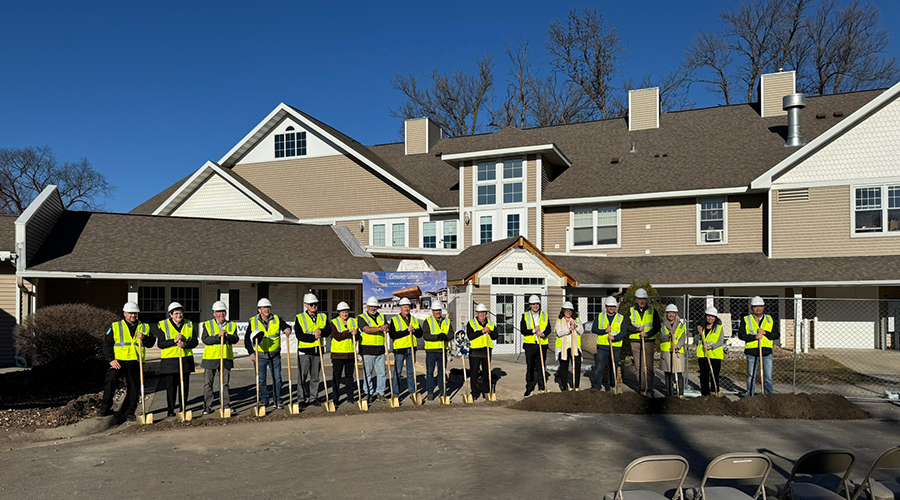Hospitals and other healthcare facilities are inherently complex and demand the highest level of life safety to protect patients, staff and visitors. Healthcare facility workers are integral to achieving this goal, from developing designs and drawings that are code compliant to maintaining facilities year-round.
In an era of increased digital transformation in the workforce, emerging technologies, such as digitized codes and standards and immersive training formats, are vital in enabling professionals to perform their jobs efficiently, accurately and safely.
Digital tools empower employees to maximize safety code compliance in a variety of ways, particularly when it comes to training, collaboration and knowledge transfer. By leveraging these tools, healthcare facility managers and staffs can create a more adaptable workforce that keeps pace with the evolving healthcare safety sector.
The importance of training
The design, construction and maintenance of healthcare facilities requires professionals who can navigate the evolving landscape of fire and life safety codes and standards. Periodic training is essential to ensure that healthcare facility professionals are equipped with the latest knowledge and skills to navigate a world of regulations and patient safety.
Organizations can leverage emerging digital training formats to their advantage in working toward the continuous education of their workforce. Investing in online educational tools enables greater access and flexibility for employees and improves employee retention:
Access and flexibility. Digital transformation has reshaped safety training, making live and on-demand virtual formats a popular method for education and growth. Digital training enables healthcare trades workers to access standardized, high-quality content no matter their location. It also allows employees to take a self-paced approach to learning, breaking courses into smaller increments during breaks or downtime and mitigating burnout associated with longer training programs.
Employee retention. Frequent and proactive safety training for healthcare professionals yields a more prepared workforce, and it plays a pivotal role in addressing widespread labor shortages, skills gaps and retirement challenges by promoting employee engagement and retention. Employees feel empowered to perform their jobs safely and effectively when companies invest in their development.
This benefit is especially relevant for younger generations entering the workforce who are seeking opportunities for career growth and exposure to emerging technologies. By embracing innovative learning formats, such as virtual and augmented reality training, managers can present an enticing value proposition, further enhancing employee retention in the face of hiring challenges.
Digital tools for collaboration and access
The complexity of healthcare facilities necessitates seamless collaboration among diverse professionals during design, construction, inspection and maintenance. The digitization of fire and life safety codes serves as a catalyst for real-time collaboration and knowledge transfer. Three key use cases highlight the transformative power of digital tools in healthcare:
Knowledge sharing. Digitized codes and standards offer a platform for veteran professionals to share their wealth of experience with newer team members. With digital tools, seasoned skilled trade workers can make virtual notes from experience on past projects, bookmark those notes and create collections for other team members to study.
As a result, specific learnings around infection control or patient-centered room design can be effectively shared with the wider team, better preparing them for the next project. This sharing of knowledge streamlines onboarding and continuous education, fostering efficiency and preventing the repetition of past mistakes.
Immersive situational navigation. Visual elements and situational navigation facilitated by technology bring safety codes and standards to life. With emerging digital tools, healthcare facilities teams can explore interactive renderings of patient corridors, nurses’ stations, operating rooms, medical gas zone valves and patient rooms and see the specific code requirements. This process can help ensure that critical requirements are adhered to throughout the entire lifecycle of a facility, from design and construction to inspection, testing and maintenance.
Centralized documentation for approvals. Given the multitude of authorities having jurisdiction (AHJs) in the healthcare sector, it is critical to be able to capture equivalencies, allowances, approvals and other notes in an organized, well-documented manner. Digital hubs provide a future-proofed, collaborative place for documentation, while including search features for enhanced navigation. They also provide visibility to all relevant stakeholders, aid in reducing miscommunication and facilitate quicker dispute resolution and project completion.
Digital future for fire and life safety
The complex nature of healthcare environments demands an unwavering commitment to life safety for healthcare facilities managers and staffs. In the era of increased digital transformation, emerging technologies are indispensable in empowering these professionals to fulfill this responsibility.
The integration of specialized training, collaboration and knowledge transfer through digital tools ensures compliance with evolving safety protocols, and it cultivates a culture of continuous improvement. As managers embrace a digital future for healthcare fire and life safety, these advancements empower employees to execute their roles effectively and increase facility safety. The fusion of traditional expertise with cutting-edge technology is the key to creating healthcare environments that are code compliant and dedicated to the well-being of all within their walls.
Brian O’Connor, P.E., is a technical services engineer with the National Fire Protection Association (NFPA).

 Healthcare Is the New Retail
Healthcare Is the New Retail Bridgeway Behavioral Health Services Launches Campaign to Renovate Health Center
Bridgeway Behavioral Health Services Launches Campaign to Renovate Health Center Ground Broken for New North Dakota State Hospital
Ground Broken for New North Dakota State Hospital AI Usage for Healthcare Facilities
AI Usage for Healthcare Facilities Ground Broken on Pelican Valley Senior Living Modernization Project
Ground Broken on Pelican Valley Senior Living Modernization Project